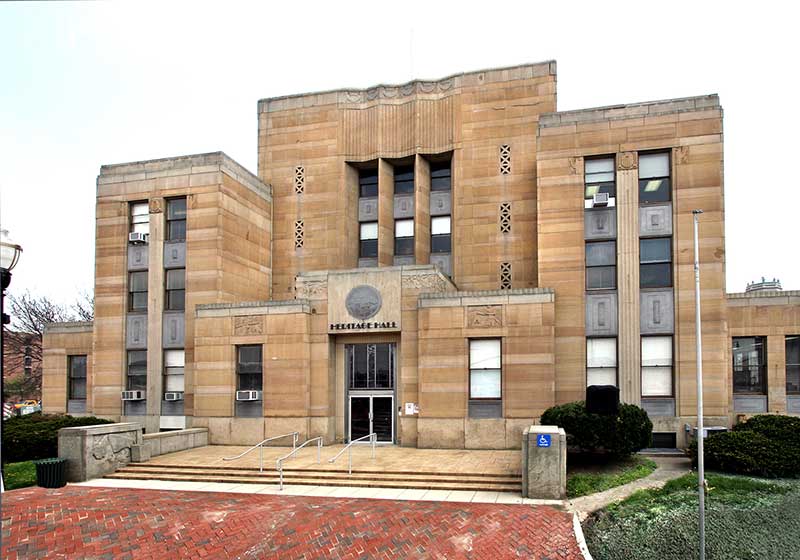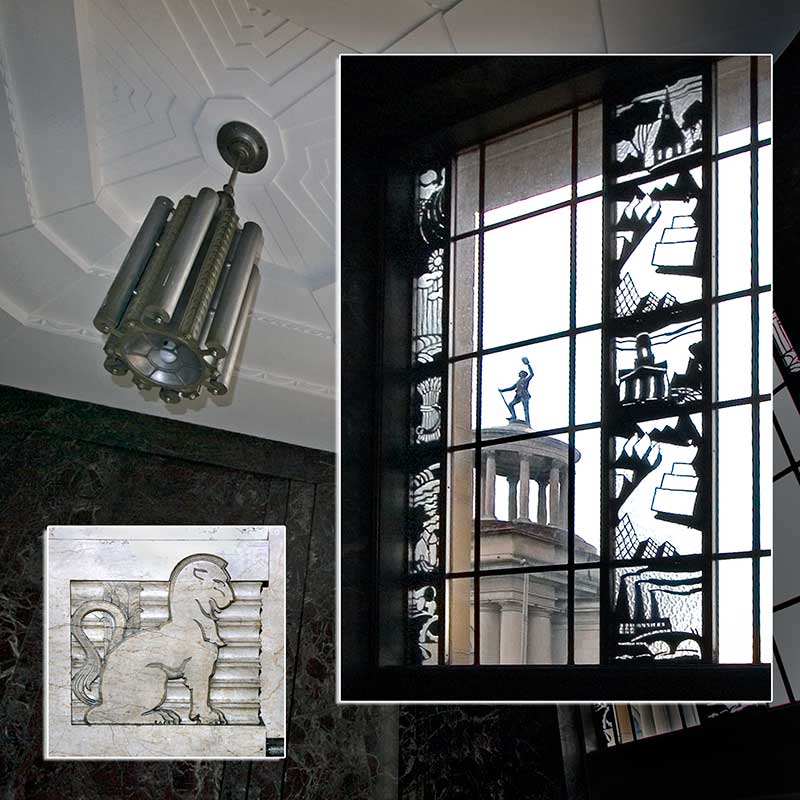The Mueller Building
Opening Dedication
The Hamilton Municipal Building was dedicated Sunday, November 24, 1935, and was open for business the next day. The city had been using the former Hamilton and Rossville Female Academy building, a smaller two-story structure, since 1875. For more than 50 years, city affairs were conducted from that location until 1928. In March, 1928, the city moved the majority of its functions into the former Ohio Casualty Company building on South Second Street near Ludlow Street.
On June 16, 1933, the National Industrial Recovery Act (NIRA) was passed and in just twelve short days Hamilton City Council approved an issuance of $425,000 in bonds covering 70% of the cost of a new municipal Building. The project was estimated to cost $555,765, the remainder of which would be provided by the Public Works Administration (PWA), an arm of NIRA.

The Municipal Building, Hamilton, Ohio

Art Deco at Its Finest
The selection of a site for the planned building proved to be unproblematic for the City of Hamilton. The city was already in possession of a large portion of the present site, previously dedicated to City Hall. By acquiring some of the adjacent land along High Street a suitable location was established. On July 31, 1934, after the Public Works Administration approved the project, demolition of the High Street buildings began.
Several local leading architects including Frederick Mueller, Walter Hair, and their associate Ralph Hetterich cooperated on the project. It became apparent that the new building should be both commanding and elegant but also accessible and functional. The Art Deco building which still stands today possesses each and every one of these qualities. Intricate details are woven throughout the building’s fourth and fifth stories. With entrances on all sides, the building was accessible but also allowed the administrative offices to be set apart.
An Impressive Beauty
The beauty of the building is enhanced by its impressive array of stone bas reliefs. These works were modeled by the young Robert McCloskey. McCloskey was only 19 years old, but he caught the spirit of civic growth within his hometown. After the completion of the project, McCloskey remained close to Frederick Mueller and often advised Mueller on various projects long after he launched his own career.
The cornerstone ceremony was held on Sunday, June 30, 1935, and the city offices opened on Monday, November 25, 1935. The first council meeting in the new chambers took place on the evening of December 5, 1935. Over seventy years later, the Hamilton Municipal Building at 20 High Street remains an Art Deco monument within the City of Hamilton.

Stone carvings enhancing the building were modeled by Robert McCloskey at 19 years old.
Former city council chambers

“Founding Of the Fortress” was painted by 28 year old Hamilton resident Jack Willard.
A beautiful 16 X 10 foot mural, pictured here, can be found on the third floor of the west wing in the former city council chambers. The mural titled “ Founding Of the Fortress” was painted by 28 year old Hamilton resident Jack Willard. He received $500 for the painting which was unveiled October 1, 1941, as part of the sesquicentennial celebration. The mural depicts people prominent in the building of Fort Hamilton in 1791. They include the man the county was named after; General Richard Butler, Charles Gano, a government surveyor and Robert McClellan, an army scout. Willard researched a great deal to depict bits of early history and authentic hardwood trees in his mural.
